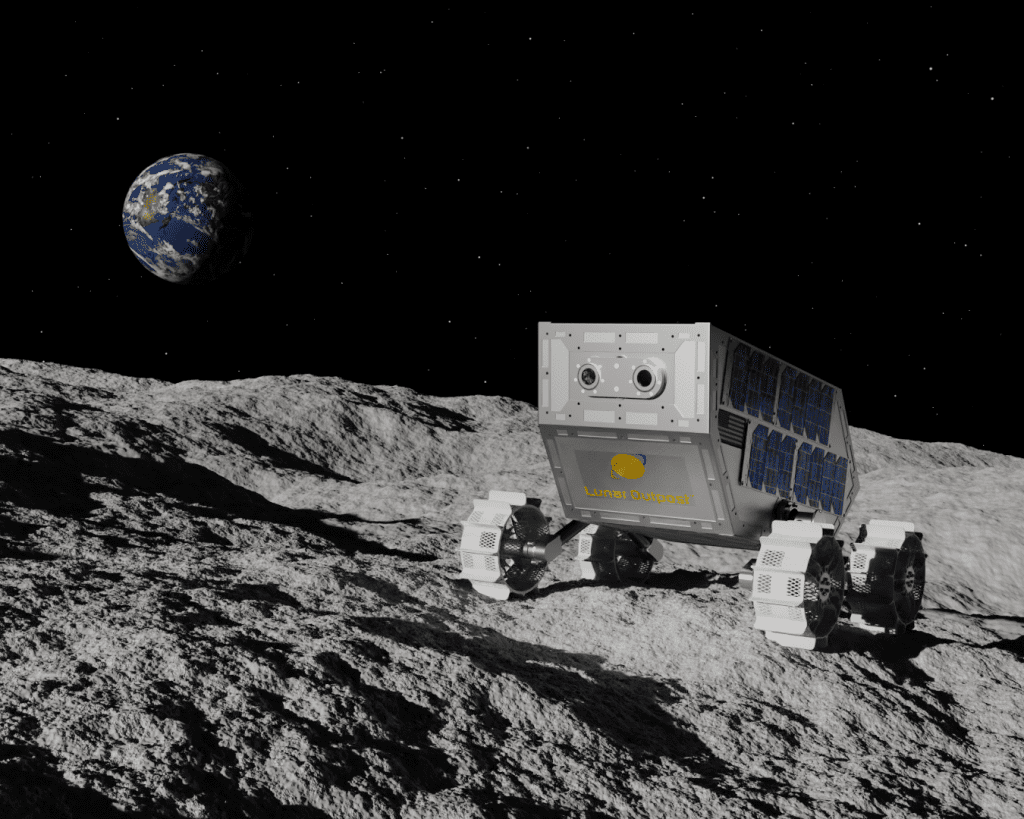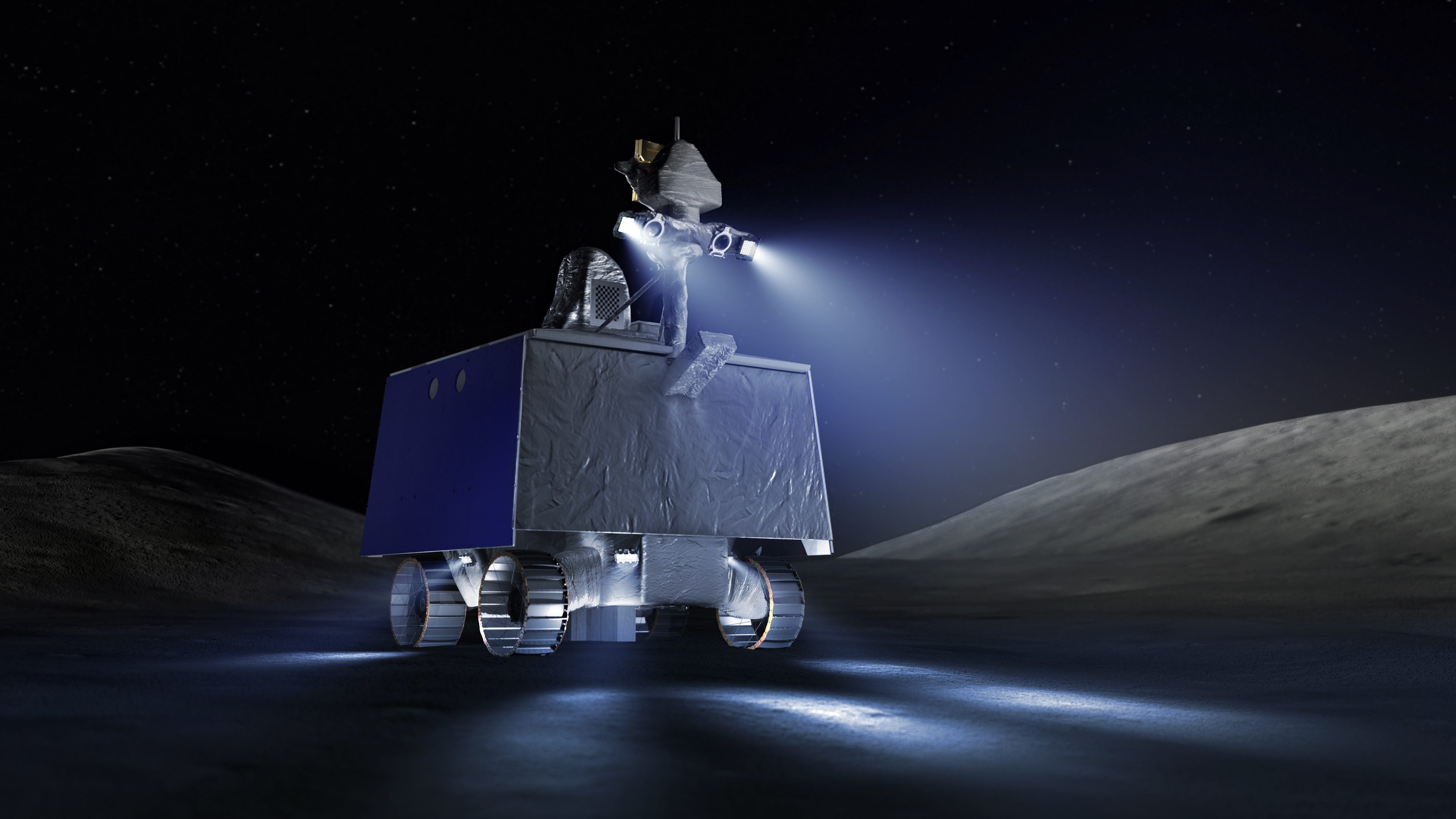The single robot inhabitant of our Moon, Yutu-2, is about to get some well-deserved company in the form of over a dozen multinational rovers and landers. Our moon will join Mars in becoming the second celestial body in our solar system to be positively teaming with little robot scientists.
The Moon is currently inhabited by the lonely Yutu-2 – the successor of the now powered down Yutu – which landed on the Moon’s surface in 2019 and has been working hard ever since studying the satellite’s subsurface structure.
Ahead of Artemis III’s manned mission back to the Moon, a large team of highly specialized robots will be landing throughout the next few years as a part of NASA’s Commercial Lunar Payload Services (CLPS) initiative.
Here’s a quick look at some of the industrious bits of tech that will soon call our satellite home.
Asagumo

Image credit: Spacebit
Kicking off our international crew is Asagumo, which will be launching in late 2022. Developed by private company Spacebit, the project will mark the first UK mission to the Moon, as well as the first Ukrainian Moon mission.
Weighing just 1.5 kilograms (3.3 pounds), this dinky overachiever will also be the first Moon rover to walk instead of roll across the satellite’s surface, with the use of its four spider-like legs.
Asagumo’s mission involves exploring the Moon’s lava tubes. It will measure ambient lunar temperatures, and accumulated radiation doses, and test its thermal stabilization systems.
But this spindly toolbox is here for a good time, not a long time, as its mission length is just eight Earth days.
Mobile Autonomous Prospecting Platform (MAPP)

Image credit: Lunar Outpost
Late 2022 should also see the launch of Intuitive Machine’s Nova-C lander supporting Nokia’s LTE/4G NASA Tipping Point project. That’s right, the moon may soon have 4G connectivity.
The MAPP rover onboard the Nova-C lander will touch down at the Moon’s South Pole, where the lander will attempt to establish a secure network, while the rover traverses the area collecting performance data and testing network communication capabilities in the varied lunar surface conditions.
Despite a short mission time of just 12 Earth days, if the team are successful in establishing an LTE/4G connection this could revolutionize communication capabilities for the Moon’s current techy inhabitants, its future human explorers, and the control stations back on Earth.
COLMENA

Image credit: UNAM
Launching next June is Mexico’s COLMENA. With a name that means “hive” in Spanish, Mexico isn’t holding back on their first lunar mission as they plan to send a hive of five autonomous mini rovers to the Moon’s surface.
This robo-swarm will be traveling inside a lander – the hive – which, after landing, will open its doors and literally catapult the rovers 9 meters (30 feet) across the lunar surface. After which they will be able to test their autonomous navigation and regrouping capabilities.
Weighing just 60 grams (0.1 pounds) and measuring 12 centimeters (4.7 inches) in diameter, this lightweight crew will be landing at the moon’s Lacus Mortis, also known as the Lake of Death. Instead of traveling along the Moon’s surface, however, these virtually weightless rovers will travel on a layer of fluid-like floating dust. Here, they will test the electrostatic charge of the particles, measure particle sizes, and look for magnetic fluctuations.
Lunar Vertex

Image credit: Johns Hopkins APL/Lunar Outpost/Ben Smith
With an arrival date in 2024, the team at John Hopkins Applied Physics Laboratory have designed the Lunar Vertex to study the Moon’s famous swirls.
The lander will be delivered to Reiner Gamma, an area of increased magnetic activity, where it plans to unleash its trusty rover that will drive right on through the area for up to 2 kilometers (1.2 miles).
Using the rover’s onboard multispectral microscope and magnetometer, the mission’s aim is to analyze magnetic anomalies on the ground. By measuring the area’s regolith – a layer of loose surface rock and dust – scientists hope to narrow down the origin story of the lunar swirls by measuring the characteristics of these particles.
The findings will hopefully advance our understanding of how the magnetic structure of the Moon functions, and if the Moon’s structure could help explain anomalies found on other celestial bodies.
Volatiles Investigating Polar Exploration Rover (VIPER)

Image credit: NASA/Daniel Rutter
NASA will be launching VIPER in late 2024, being delivered to the Moon’s South Pole for its 100-Earth-day mission.
VIPER’s exploration will make it the first resource mapping expedition on another celestial body, as the mission aims to collect data on the location and concentration of water ice in some of the Moon’s permanently shadowed craters. Using its three spectrometers and 1-meter-long (3.28-foot) drill, the rover will dig into the Moon’s surface, attempting to understand the source of the lunar polar water.
The mission data will enable scientists to understand the extent to which the Moon can be used as a hub for valuable resources like water, one day aiding in the sustenance of human life on Moon bases and potentially supplying resources for future explorations further into our solar system.
Honorable mentions
With so many incredible bits of tech scheduled to blast off to the Moon, selecting just five was nigh-on-impossible. So, here’s a bunch more.
Japan’s YAOKI has been named after the Japanese proverb “Nanakorobi Yaoki”, meaning “to get back up again and again, no matter how many times you fail”. This tiny rover just keeps getting back up as its design allows it to carry on moving no matter which way it lands. The team hopes to send more of these in the future to aid in the Moon base building effort.
Meanwhile, Australia is planning to send its first rover in 2026. This resource mapping mission aims to extract oxygen from the lunar soil, in hopes of using it to sustain human exploration.
No earlier than 2027, NASA plan to send their Lunar Terrain Vehicle. The electric vehicle will be delivered in preparation for the arrival of the Artemis astronauts. Providing the team with transportation, the vehicles can also be controlled remotely for the time being spent unmanned.
Source Link: The Population Of The Moon Is About To Skyrocket